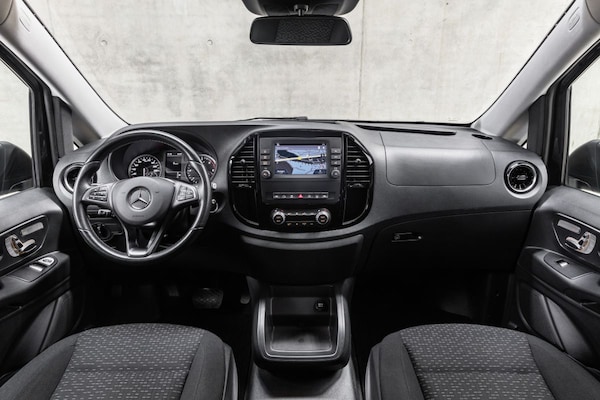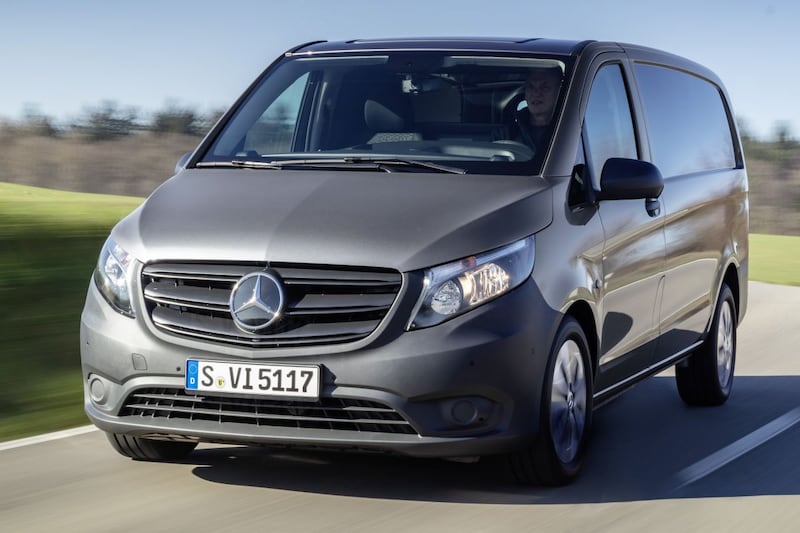In order to give the Mercedes-Benz eVito a decent range, it was necessary to have a passenger bus from Tourer to delivery van built; the standard eVito was simply very poor in terms of battery. We set off with such a converted version.
In the meantime, the matter has been fairly straightened out. With 41.4 kWh, the outgoing eVito had an underpowered range of 150 kilometers according to WLTP, which is why they referred to the eVito as ‘city range’ at Mercedes. The new standard battery is now 66 kWh in size, with a usable capacity of 60 kWh, according to the manufacturer. The range is now 280 kilometers. In addition, a fast charging function has been added. The specifications for the Tourer driven are different, because the battery pack in that version is 100 kWh and the engine power is 150 kW. With the eVito this is 85 kW at the front wheels; the stated value is the peak power, because 70 kW is available ‘regularly’. More important, of course, is the torque, which amounts to 360 Nm in both cases. In practice, the eVito is certainly smooth enough for a delivery van, because sprinting away quickly or skilfully merging is always possible. Mercedes specifies a top speed of 100 km/h, which can optionally be adjusted to 80 or 120 km/h. Always do the latter, for safety reasons. After all, you want to have a little reserve, don’t you?

paddles
Driving is hassle free, smooth and smooth. And also better than with the previous version, because from now on you as a driver have control over regenerating braking energy. Unlike the electric mid-range Stellantis, it is not about a simple button that brings you into a program that makes the car brakes more strongly on the engine, but you have access to real paddles behind the wheel. Very nice, because it allows you to respond very accurately to any traffic situation. There is also an automatic mode, which uses information from the various safety systems. That means looking ahead at traffic via radar and choosing the right degree of recovery yourself. And that turns out to be a trick that the eVito has mastered very well. In addition, there are three driving programs to choose from; At the push of a button you switch between maximum savings, normal driving and optimum performance. The normal position offers an excellent compromise. After a varied, but fairly short journey, the average consumption according to the on-board computer was 22 kWh/100 km. Very neat. Charging can be AC (0-100% with 11 kW in 6.5 hours) and DC (0-80% with 80 kW in 0:35 hours).

Valve
The eVito is available in the two longest versions with a tailgate as standard; two doors are available at extra cost. The loading volume is 6.0 or 6.6 m3, with payloads of 890 and 860 kilos respectively, no outliers in this segment. Many essentials are present, such as electrically heated and adjustable exterior mirrors, a heated driver’s seat, air conditioning, rain sensor, on-board computer and a multifunctional steering wheel; it is a pity that the radio requires an additional cost. True to Mercedes, there are plenty of options to further generously dress the car, including with packages. A disadvantage of the Vito is that its dashboard does not provide any space for the installation of modern, large displays, but that there is a kind of small television that you have to stare at. Another point of criticism applies to the seating position, because even if you don’t sit for very long you will notice that the seat cannot slide back far enough. And that while the dividing wall that you then bump into is already entering the cargo space quite a bit. Speaking of which: because the battery pack is neatly concealed under the floor, the cargo space of the eVito is the same as that of the regular model. Prices start at €45,725, including four years of maintenance.
– Thanks for information from Autoweek.nl
